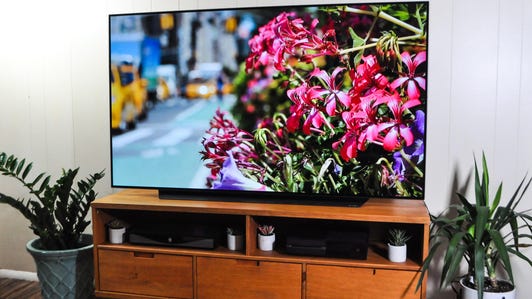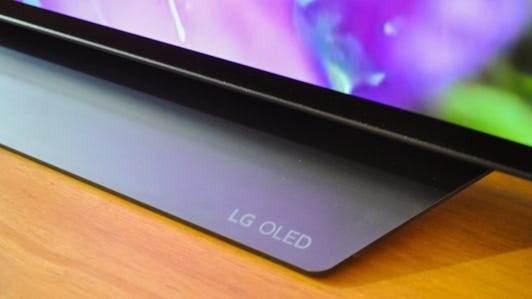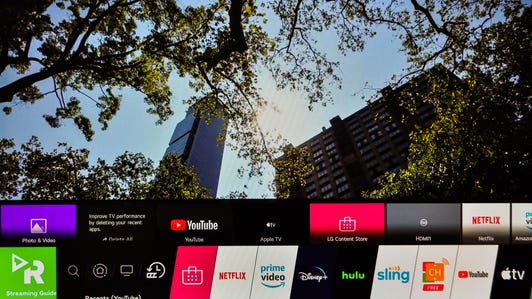
By this point there's no question whether OLED-based TVs have the best picture quality available: they do. In my opinion they're definitely worth the extra money compared to other high-end TVs. The only question that matters is, if you can afford an OLED TV, which one should you buy? LG is the OLED leader and its 2020 CX series achieves as impressive a picture as any TV I've ever tested, its features are cutting-edge and the price in late 2020 is pretty close to as low as it's gonna get. In other words: this is the OLED TV to buy.
Like
- Better picture quality than any non-OLED TV.
- Superior contrast and off-angle image.
- Slim design and packed with features.
Don't Like
- Expensive compared to non-OLED TVs.
After reviewing the CX and a handful of other TVs this year -- as well as numerous OLED and LCD TVs from years past -- I can say with confidence that the CX is the best. I compared it side by side to the TCL 8-Series, which has the best picture quality of any non-OLED TV I've reviewed. It's a superb performer and brighter than the CX, but the OLED beat it for overall picture quality. Every OLED TV I've ever reviewed exhibits the true black levels, infinite contrast and near-perfect off-angle performance that makes images come to life like no other TV technology you can buy.
This year I haven't had the chance to review the CX's main OLED competition, namely the Sony A8H, the Vizio OLED-H1 or LG's own BX series. Based on my years of experience, however, and reports from other reviewers about those TVs -- including Wirecutter and RTings -- if I had to recommend any OLED now, it would be the CX. I expect its improved processing to be worth the small price increase over the BX and the Vizio, and it has better next-gen gaming features than the Sony.
It might be tempting to spend a bit less on one of those TVs, especially if it's on sale, and if the price gap is significant I can't blame you. In general I expect any OLED TV to outperform any LCD TV. But based on my experience the CX is the best choice, regardless of price. I expect to review more OLEDs next year, but until then you can't go wrong with the CX, which is why it earns CNET's 2020 Editors' Choice Award for high-end TVs.
Get to know the LG CX series
- It's pronounced "C-10" because LG wants to be like Apple I guess.
- It comes in 48-, 55-, 65- and 77-inch sizes. The 48-inch model is new for 2020.
- As usual for OLED TVs, the 77-inch model is proportionally more expensive, at nearly twice the price of the 65-incher. Competing 75-inch LCD-based TVs are much more affordable.
- The 2020 CX adds a few extras that the B9 from 2019 is missing, namely an improved image processor, compatibility with AMD FreeSync and a new Filmmaker picture mode. Otherwise they're very similar.
- OLED display technology is fundamentally different from the LED LCD technology used in the vast majority of today's TVs, including Samsung and TCL's QLED models.
- The best LCD TVs I've reviewed so far, including the TCL 8-Series and 2019 Vizio P-Series Quantum X, scored a 9 in image quality. At times they were brighter in HDR than the OLEDs, but otherwise the OLEDs' images were superior in almost every way.
- All OLED TVs are more subject to both temporary and permanent image retention, aka burn-in, than LCD TVs. We at CNET don't consider burn-in a reason for most people to avoid buying an OLED TV, however. Check out our guide to OLED burn-in for more.
Not much has changed with LG's design. The panel on the B9, the CX and other recent OLED sets is still vanishingly thin when seen from the side, about a quarter-inch deep, with a chunkier section at the bottom that juts out another 1.75 inches. That section houses the inputs, power supply, speakers and other depth-eating TV components.
From the front it's pure TV minimalism. There's less than a half-inch of black frame around the top and sides of the picture itself. Then there's a bit more below, but no trace of silver, no "LG" or any other logo at all.
The CX's stand is very similar to the C9's, its angled edges and medium width across the bottom of the screen. It's more heavily weighted than the B9 on the rear to (I presume) better resist tipping forward. That said, I've never had any fear of the B9 tipping forward, and I always recommend using a TV safety strap if you have kids.
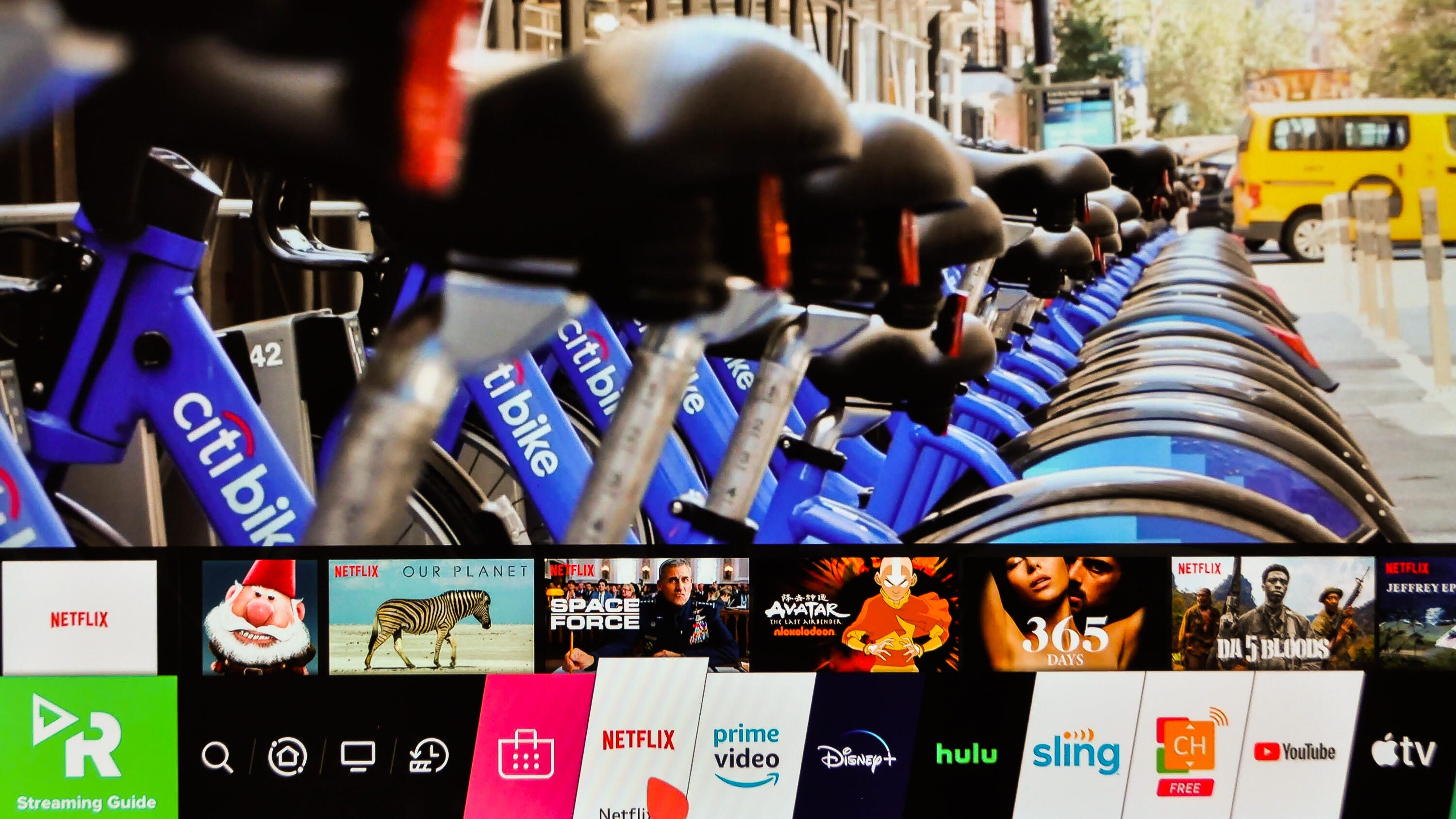
Solid app and voice support
LG's webOS menu system is also basically unchanged from last year. It still lacks the innovative extras and app-based setup of Samsung's Tizen system and falls well short of the app coverage of Roku TV or Sony's Android TV. If you want more apps, your best bet is to get an external streamer, although only a handful, including the Apple TV 4K, Amazon Fire TV Stick 4K and Nvidia Shield can support Dolby Vision and Dolby Atmos. Meanwhile LG's apps for Netflix, Amazon, Disney Plus and Vudu all support Dolby Vision and Dolby Atmos, while Apple TV app supports Vision but not Atmos. Using the TV's built-in apps gets you the highest-quality video and audio from those services, no external streamer required.
The remote tracks the motion of your hand to whip quickly around the screen, something that's particularly helpful when signing into apps or searching using an onscreen keyboard. The scroll wheel is also great for moving through apps, like those seemingly infinite thumbnail rows on Netflix and Amazon.
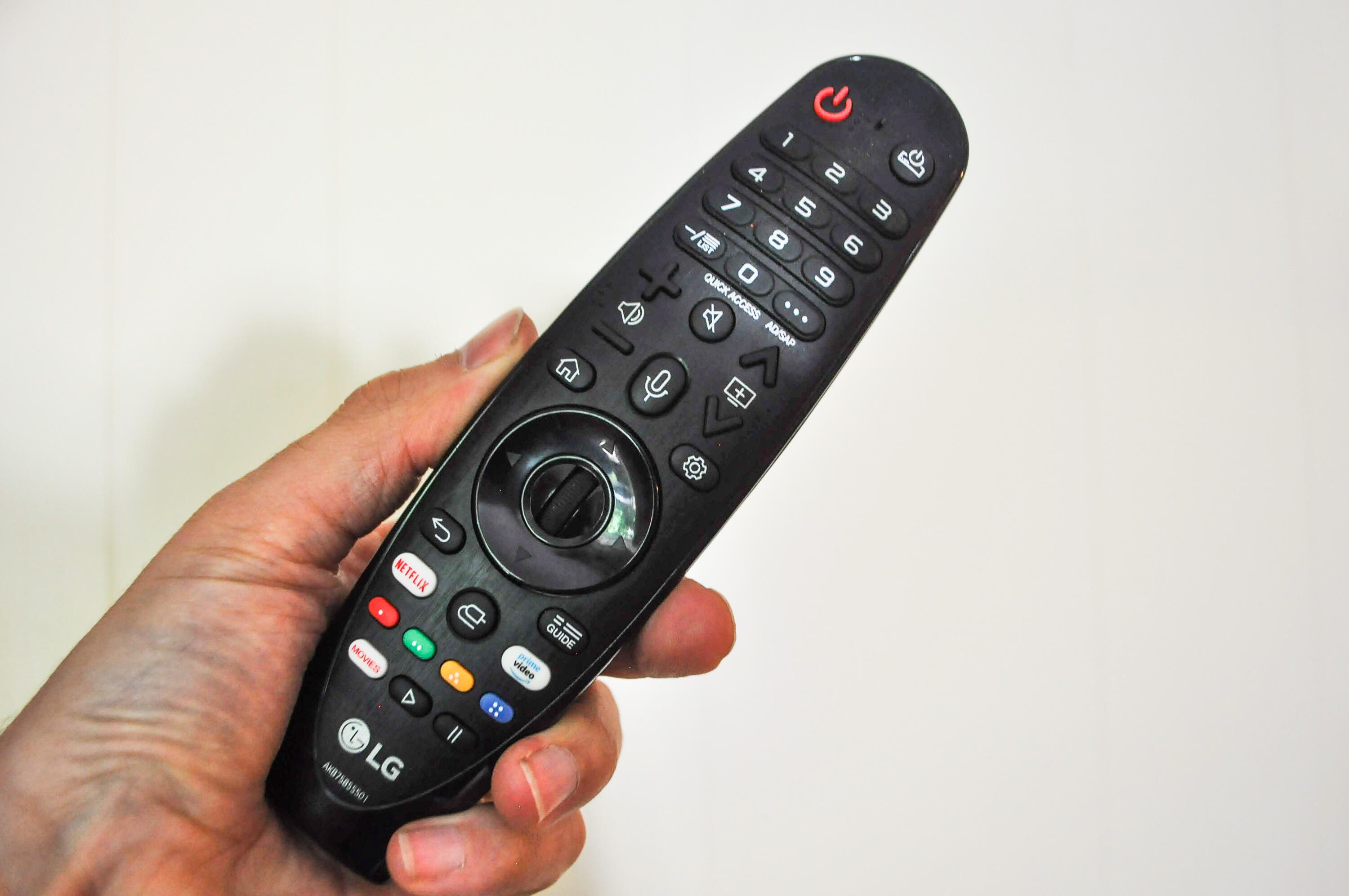
LG's TVs are still the only devices that let you use both Google Assistant and Amazon Alexa. The main mic button invokes Google Assistant while a long-press of the Amazon button gets you Alexa. Both can do all the usual Assistant stuff, including control smart home devices, answer questions and respond via a voice coming out of the TV's speakers (yep, both voices). Basics like "What's the weather?" works as you'd expect from either assistant, complete with onscreen feedback.
The CX also works with Apple's AirPlay 2 system, just like many other TVs including 2019 models like the B9. I was able to fire up my iPhone to share photos and video to the screen from the Photos app as well as mirror my Mac and phone screens. The LG also has the Apple TV app, of course.
Key features
| Display technology | OLED |
|---|---|
| LED backlight | N/A |
| Resolution | 4K |
| HDR compatible | HDR10 and Dolby Vision |
| Smart TV | webOS |
| Remote | Motion |
The feature-packed CX includes just about everything that matters in a modern TV. LG says the new A9 Gen 3 chip -- included on the CX but not on the B9 or BX -- has improved deep learning chops and "AI picture Pro" enhancements. I didn't notice any major benefits from the processor in my testing.
New for 2020 is the Filmmaker Mode, which takes the place of the Technicolor Expert modes of years past. As promised it turns off the Soap Opera Effect for film-based content (yay) but so do many other modes in the CX, including Cinema, ISF and Dolby Vision itself (yes, this TV has a LOT of picture modes). While plenty-accurate it's also relatively dim so I ended up using Cinema and ISF Bright for most critical viewing.
All of LG's 2019 and 2020 OLED models include the latest version of the HDMI standard: 2.1. That means their HDMI ports can handle 4K at 120fps, support enhanced audio return channel (eARC) as well as two gamer-friendly extras: variable refresh rate (VRR) and automatic low latency mode (ALLM, or auto game mode). Check out HDMI 2.1: What you need to know for details. I didn't test any of these features yet for this review.
Speaking of VRR, the B9 and CX also support the Nvidia G-Sync standard. One difference between the two, however, is that only 2020 models like the CX will also support AMD FreeSync.
Bear with me, normal readers, because there is one ultra-technical downgrade on the CX compared to the 2019 C9. As reported by Forbes, the new model's HDMI ports support 4K at 120fps up to 40Gbps (10 bits), while last year they went up to the full 48Gbps (12 bits). In a statement, LG told CNET that "the market situation evolution indicated that real content that requires 48Gbps is not available in the market." The only devices that might look better at 12-bit compared to 10-bit are next-generation consoles like the PlayStation 5 and Xbox One Series X, but I'd be surprised if it makes a big difference.
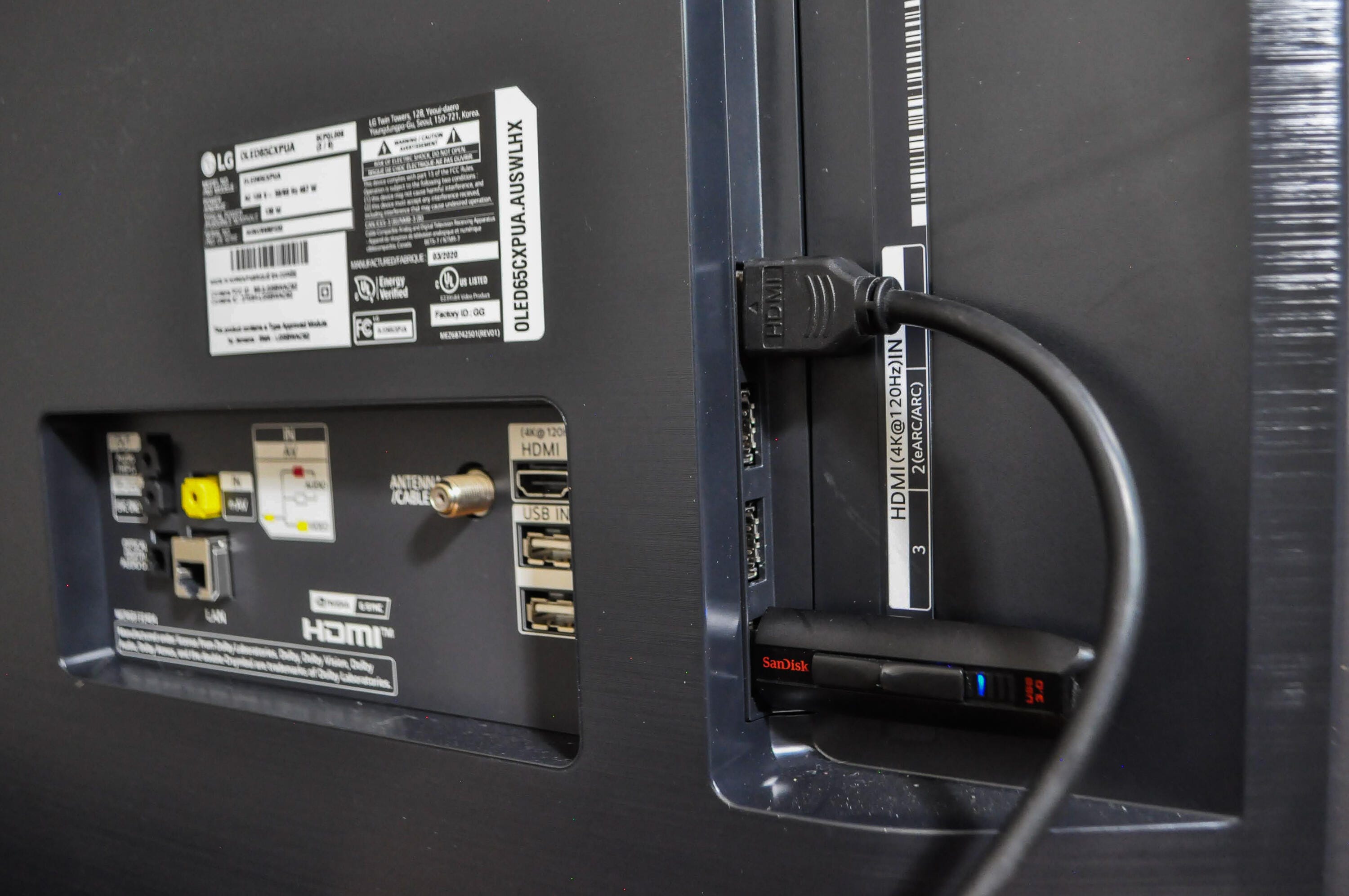
The selection of connections is otherwise top-notch. Unlike many of Samsung's sets, this one actually has an analog video input for legacy (non-HDMI) devices, although it no longer supports analog component video. There's also a dedicated headphone/analog audio output.
- Four HDMI inputs with HDMI 2.1, HDCP 2.2
- Three USB ports
- Composite video/audio input
- Optical digital audio output
- Analog audio 3.5mm headphone output
- RF (antenna) input
- RS-232 port (minijack, for service only)
- Ethernet (LAN) port
Picture quality comparisons
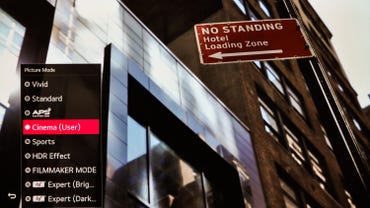
Click the image above to see picture settings, calibration and HDR notes.
David Katzmaier/CNETNormally I'm able to compare a TV against four or five others side-by-side, but during coronavirus lockdown the size of my basement -- and limited access to comparison TVs -- reduced that number to two. Happily they were two of the best TVs of 2019, the B9 OLED and the TCL 8-Series. As I mentioned above the CX and B9 were basically tied, with image quality that deserves a score of 10/10, while the TCL fell a bit short of both.
Click the image at the right to see the picture settings used in the review and to read more about how this TV's picture controls worked during calibration.
Dim lighting: Lined up in my darkened basement TV lab, the CX immediately distinguished itself from the LCD-based TCL but not so much from its sister LG OLED. Between the two OLED TVs I didn't spot any major differences.
Watching the 1080p Blu-ray of Parasite, the trademark perfect black levels and superior contrast of OLED were an upgrade in punch and realism. Every scene benefited, but as usual the darker ones showed the largest differences. As the Parks discuss the transgressions of their chauffeur in Chapter 4, for example, colors of their faces, clothes and the surrounding kitchen looked, well, richer and more realistic. In extremely dark scenes like Park Dong-ik's ride in the back of the car, the difference was even more evident in a side-by-side comparison.
Shadow detail was excellent on the CX and overall dark areas still looked significantly more realistic than with the TCL. Pro tip: In my recommended picture mode, Cinema, bump up Brightness from 50 to 52 to reclaim those shadows while still preserving perfect black levels.
Bright lighting: No major changes here: The CX was as bright as previous LG OLEDs and significantly dimmer than high-end LCDs.
Light output in nits
| TV | Brightest (SDR) | Accurate color (SDR) | Brightest (HDR) | Accurate color (HDR) |
|---|---|---|---|---|
| Vizio PX65-G1 | 1,990 | 1,120 | 2,908 | 2,106 |
| TCL 65Q825 | 1,653 | 904 | 1,818 | 982 |
| Samsung QN65Q80R | 1,443 | 832 | 1,494 | 1,143 |
| TCL 65R625 | 653 | 578 | 881 | 813 |
| LG OLED65C9 (2019) | 451 | 339 | 851 | 762 |
| LG OLED65CX (2020) | 377 | 290 | 690 | 634 |
| LG OLED65B9 (2019) | 374 | 283 | 628 | 558 |
LG OLEDs from 2019 and 2020 have a setting called Peak Brightness that boosts the light output for SDR sources in Cinema and Expert modes. The idea is to increase contrast for brighter viewing environments while maintaining the superior color accuracy of those modes. As with most TVs, the brightest mode for HDR and SDR (Vivid on the CX) is horribly inaccurate. For the accurate color columns above I used ISF Expert Bright (Peak Brightness: High) for SDR and Filmmaker mode for HDR -- I recommend CX owners do the same to get good color in bright rooms.
Overall, the OLED sets are still plenty bright enough for just about any viewing environment. Yes, they do get quite a bit dimmer than the LCDs when showing full-screen white -- a hockey game, for example -- but even in those situations they're hardly dim.
The CX and B9 preserved black levels and reduced reflections very well -- better than the TCL. I didn't compare a Samsung directly for this review but in the past that brand's high-end models have delivered the best bright-room performance overall.
Color accuracy: Before my standard calibration, the ISF Expert, Cinema and Filmmaker modes were already super accurate, among the best I've seen, and afterward the CX was as accurate as I'd expect. As usual, OLED's superior black levels also improved the perception of color saturation compared to the LCD other displays. Bright colors like the fruit on the Parks' countertop or the green of their backyard in Chapter 11 were lush and vibrant, while skin





























